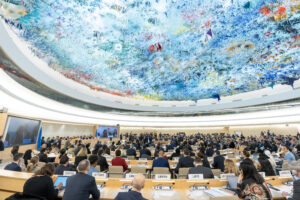VI. Causes, forms and manifestations of harmful practices
17. The causes of harmful practices are multidimensional and include stereotyped sex- and gender-based roles, the presumed superiority or inferiority of either of the sexes, attempts to exert control over the bodies and sexuality of women and girls, social inequalities and the prevalence of male-dominated power structures. Efforts to change the practices must address those underlying systemic and structural causes of traditional, re-emerging and emerging harmful practices, empower girls and women and boys and men to contribute to the transformation of traditional cultural attitudes that condone harmful practices, act as agents of such change and strengthen the capacity of communities to support such processes.
A. Female genital mutilation
19. Female genital mutilation, female circumcision or female genital cutting is the practice of partially or wholly removing the external female genitalia or otherwise injuring the female genital organs for non-medical or non-health reasons. In the context of the present joint general recommendation/general comment, it is referred to as female genital mutilation. Female genital mutilation is performed in every region and, within some cultures, is a requirement for marriage and believed to be an effective method of controlling the sexuality of women and girls. It may have various immediate and/or long-term health consequences, including severe pain, shock, infections and complications during childbirth (affecting both the mother and the child), long-term gynaecological problems such as fistula, psychological effects and death. The World Health Organization and the United Nations Children’s Fund estimate that between 100 million and 140 million girls and women worldwide have been subjected to a type of female genital mutilation.
D. Crimes committed in the name of so-called honour
29. Crimes committed in the name of so-called honour are acts of violence that are disproportionately, although not exclusively, committed against girls and women because family members consider that some suspected, perceived or actual behaviour will bring dishonour to the family or community. Such forms of behaviour include entering into sexual relations before marriage, refusing to agree to an arranged marriage, entering into a marriage without parental consent, committing adultery, seeking divorce, dressing in a way that is viewed as unacceptable to the community, working outside the home or generally failing to conform to stereotyped gender roles. Crimes in the name of so-called honour may also be committed against girls and women because they have been victims of sexual violence.
Link to full text of the report: General Comment-CEDAW-31-CRC-18-2014-eng




